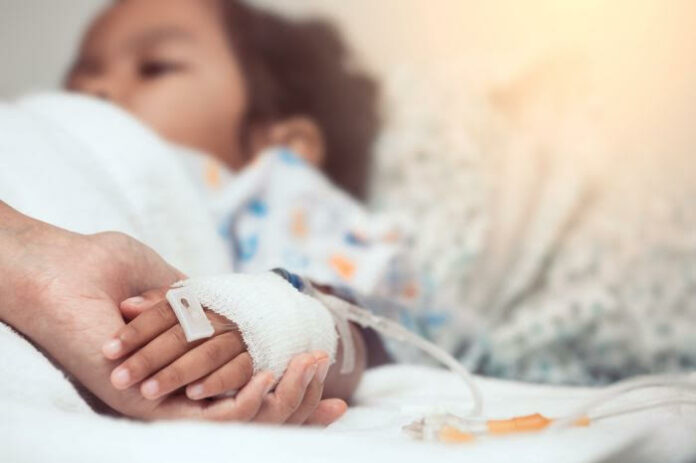When healthcare experts from the public and private sectors were asked in a survey how effective they thought infant and children’s pain was assessed where they worked, 84% answered it was ineffective.
Behind this statistic, however, lies a whole series of complexities, Elsabé Brits writes in Spotlight
Assessing pain
Measuring pain is tricky, even in adults. Pain scales and measurement frameworks depend on people answering questions, or rating their pain on a scale of say one to 10. But many children cannot self-report their pain.
So other methods are used: observation of behaviour and measurement of physiological indicators that may indicate pain, like pulse rate, blood pressure, temperature, and respiratory rate.
“The big problem in many healthcare settings is that staff have not been taught to assess children’s pain or to ignore it and consider it as part of the process. If you don’t recognise it or assess it, you won’t manage it,” says Dr Michelle Meiring, chairperson of the South African Children’s Palliative Care Network (PatchSA) and adviser for the Special Interest Group for PaedsPain (PaedsPainSIG).
She says there is inadequate training in pain assessment among practitioners.
“Some children with chronic pain are not believed (that they experience pain). Professionals under-appreciate the damage of not treating children’s pain. Not only does it prolong hospital admissions, delay recovery and wound healing, but untreated acute pain can lead to chronic pain. Undertreated pain in the neonatal period can reset that child’s pain threshold for the rest of their lives.”
Care mismatch
The PaedsPainSIG council says 30% of SA’s population are children and adolescents, but only 7% of the pain clinics in the country are dedicated to children. The council provided comments to Spotlight as a group.
In the public sector, the Western Cape is the only province with a paediatric pain clinic, while KwaZulu-Natal and Limpopo each have one adult pain clinic that occasionally treats children. Gauteng, the Eastern Cape, and the Free State only have adult pain clinics. “Pain services in the private sector are disjointed and largely non-existent, mainly run by sole practitioners,” says the council.
The International Association for the Study of Pain (IASP) established benchmarks on waiting times for chronic pain treatment in 2009. IASP considered pain in children an urgent condition, to be treated within a week of referral.
“With only one paediatric pain clinic serving 17m children and adolescents in SA, we cannot comply with that benchmark,” says the council.
They said there’s a desperate need to increase access to appropriate pain management in all provinces and to create multidisciplinary teams to develop low-cost pain treatment strategies with non-pharmacological therapies, like physical therapy and psychological support.
The role of medicine
Internationally there has been increasing recognition that we can do much better in relieving children’s pain – notably from the Lancet Commission on Palliative care and Pain Relief published in 2018.
The commission found: “The core component of the essential package is inexpensive, off-patent, injectable and oral immediate-release morphine.”
The PaedsPainSIG council says this is freely available in South Africa, although there are ongoing problems in certain provinces.
Meiring said it was also due to supply and demand. If clinicians don’t prescribe enough then pharmacists don’t prepare enough. Morphine ordering is done based on consumption because the drug is monitored to prevent it from getting into the wrong hands.
“There is still fear among doctors in prescribing morphine, so there is under prescription. And fear from the parents. Morphine is, unfortunately, thought of as the death or dying drug, not just a strong painkiller,” she says.
“Even when it is prescribed it may be under-administered. Under-administration happens not only with parents but also with nurses. Because it’s a scheduled drug, it has to be locked up in a special cupboard and can only be administered by professional nurses.”
Breakthrough pain
Problems are also experienced with preparing oral morphine syrup for children where pharmacists lack proper training or have equipment issues. An expensive scale is required to weigh morphine powder, which must be calibrated frequently.
Lack of specialists
Tragically, most children needing pain and palliative care do not have access to specialists in these fields. Many of these functions are performed by NGOs, academics, or public sector employees, with special interests in this field who do this over and above their normal duties.
There are few community-based palliative care services for children, which results in many dying or being managed at hospital level.
“Apart from the control of pain and other distressing symptoms, there is a huge need to provide more psychosocial support and spiritual care to families of chronically ill children,” Meiring said.
“Marriages are often put under strain and single moms battle with little support. There are almost no respite centres where children can be cared for to give the families a break.
“Parents suffer tremendously. Watching your child in pain, being unable to do anything about it, is one of the most terrible things a parent can experience.”
The Lancet pain management
See more from MedicalBrief archives:
Pretoria teaching hospital rife with paediatric medication errors
The simple but profound values of dying children in their final days
KZN’s cancer crisis increases demand for palliative care
Antibiotics alone an alternative to surgery for appendicitis in children
KZN Health must deliver Parliamentary timeline on solving its problems

